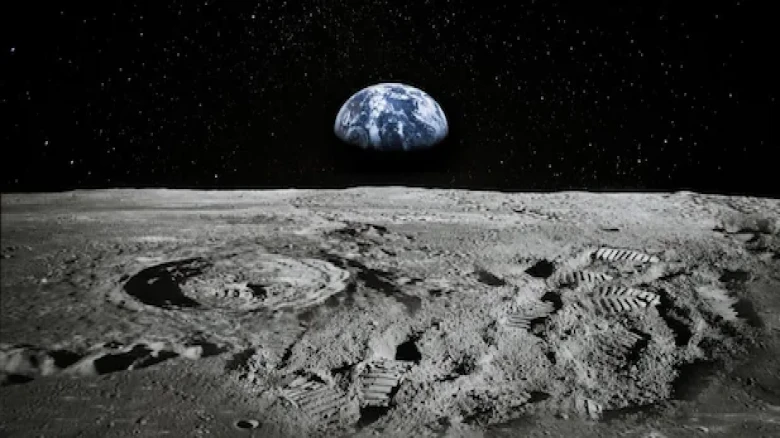National

India's Chandrayaan-1 lunar probe, launched in 2008, has been instrumental in unraveling the Moon's mysteries...
Digital Desk: Researchers from the University of Hawai'i (UH) at Manoa, in collaboration with data from India's Chandrayaan-1 lunar mission, have unveiled a captivating discovery regarding the formation of water on the Moon. This groundbreaking finding, recently published in the prestigious journal Nature Astronomy, indicates that high-energy electrons from Earth are playing a pivotal role in shaping the Moon's surface, potentially contributing to the creation of water.
The revelation holds profound implications for our understanding of lunar evolution, future human exploration, and the availability of water resources on the Moon. Furthermore, it sheds light on the origins of previously detected water ice in the Moon's perpetually shadowed regions, as reported by the Press Trust of India (PTI).
India's Chandrayaan-1 lunar probe, launched in 2008, has been instrumental in unraveling the Moon's mysteries. While scientists have long believed that solar wind, consisting of high-energy particles like protons, played a vital role in lunar water formation, this recent research delves deeper. It examines how the Moon's surface reacts as it moves through Earth's magnetotail, an area that provides some protection against solar wind but not against solar photons.
Shuai Li, an assistant researcher at UH Manoa School of Ocean, highlighted the unique properties of the magnetotail, noting, "This provides a natural laboratory for studying the formation processes of lunar surface water." Surprisingly, the study found that the water formation process within Earth's magnetotail closely mirrors that outside of it, challenging previous assumptions.
Li and fellow researchers analyzed data collected by the Moon Mineralogy Mapper instrument onboard Chandrayaan-1 during the mission's duration from 2008 to 2009. Their examination of changes in water formation as the Moon passed through Earth's magnetotail yielded intriguing insights. High-energy electrons, resembling solar wind protons, seemed to be a significant factor in this process, suggesting an additional source of lunar water formation.
This revelation, in conjunction with earlier research on the Moon's rusty poles, underscores the profound and intricate relationship between Earth and its celestial neighbor, unveiling previously unrecognized aspects of this cosmic connection.
Chandrayaan-1, launched by the Indian Space Research Organisation (ISRO) in 2008, has made groundbreaking contributions to lunar exploration. It paved the way for Chandrayaan-3, India's successful mission to land a rover and a lander near the Moon's enigmatic south pole, marking another significant milestone in lunar exploration.
As humanity continues to expand its understanding of the Moon, these findings serve as a testament to the importance of international collaboration and the relentless pursuit of knowledge in the field of space exploration. The mysteries of the Moon are gradually unraveling, offering new insights and potential opportunities for future lunar missions and resource utilization.
Leave A Comment